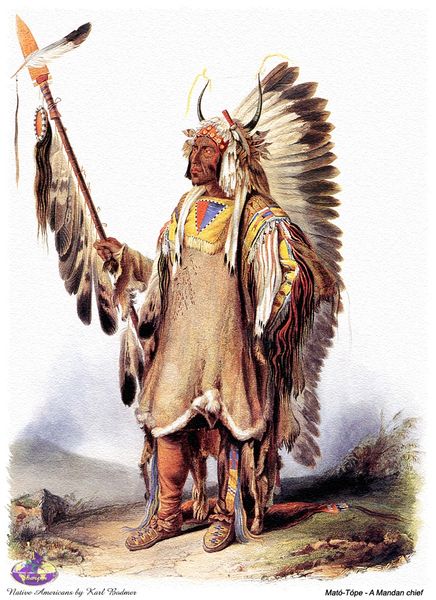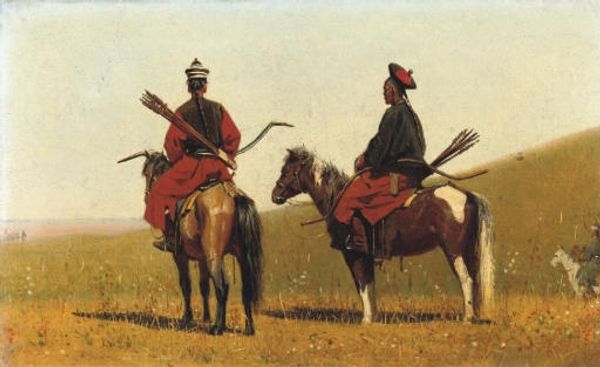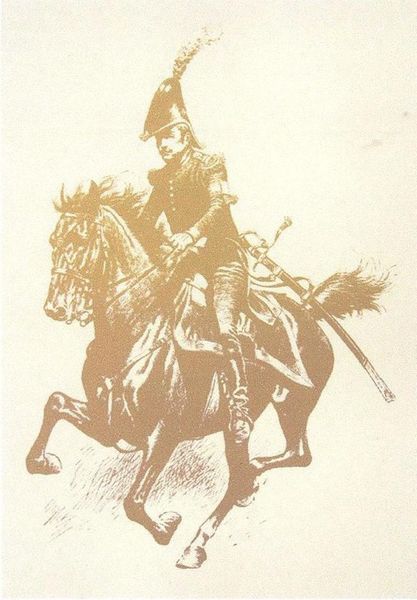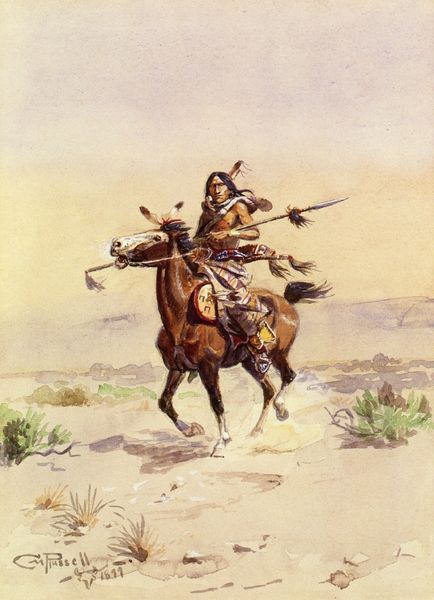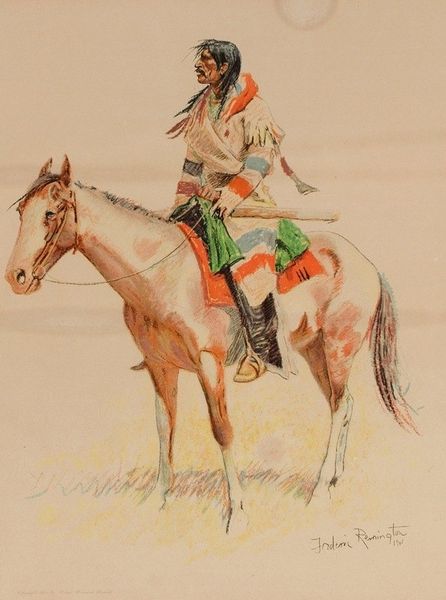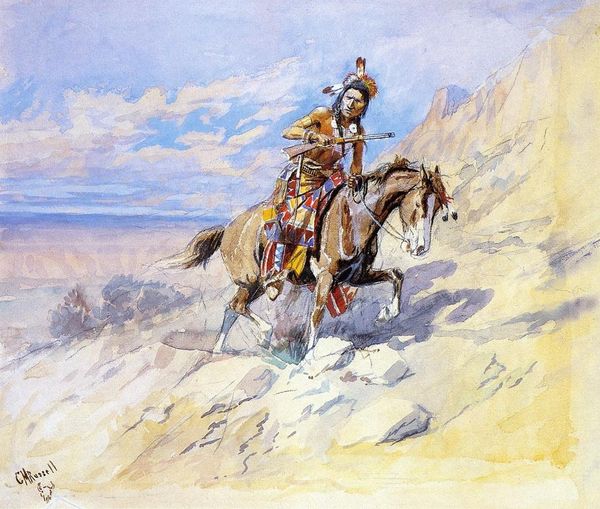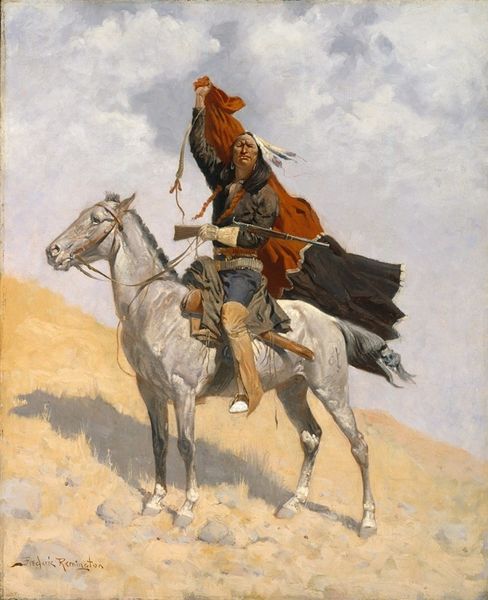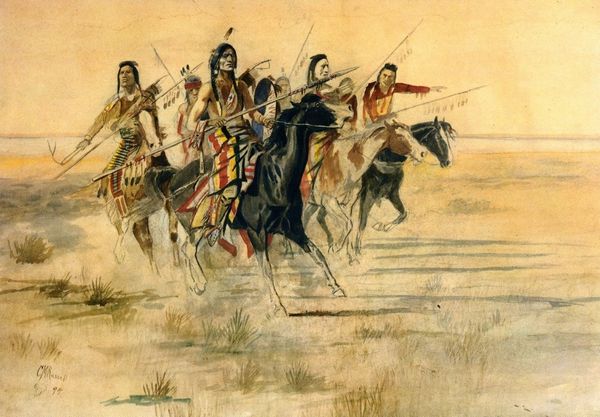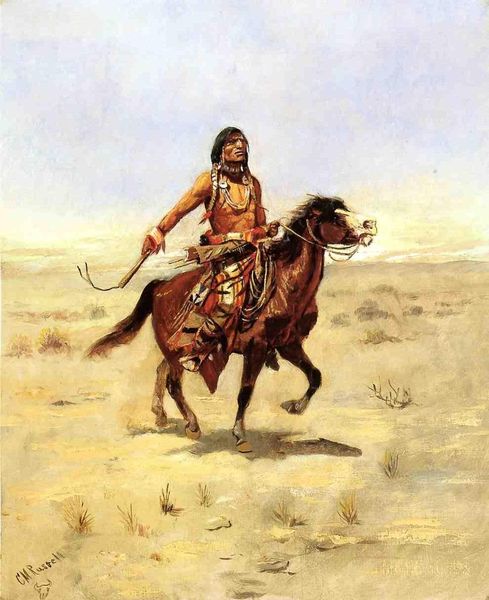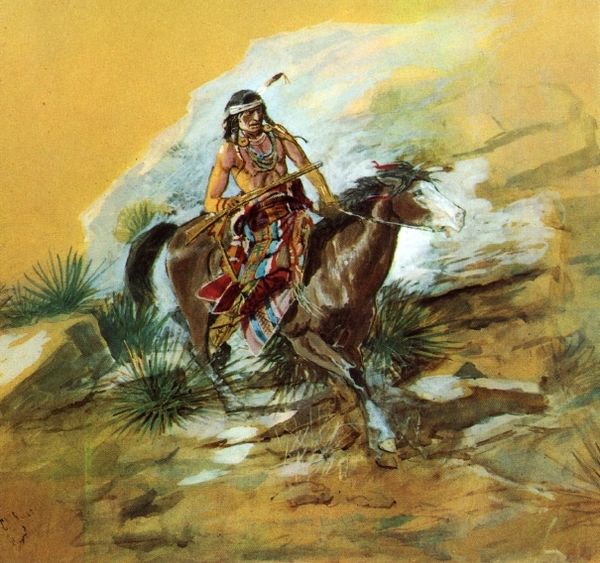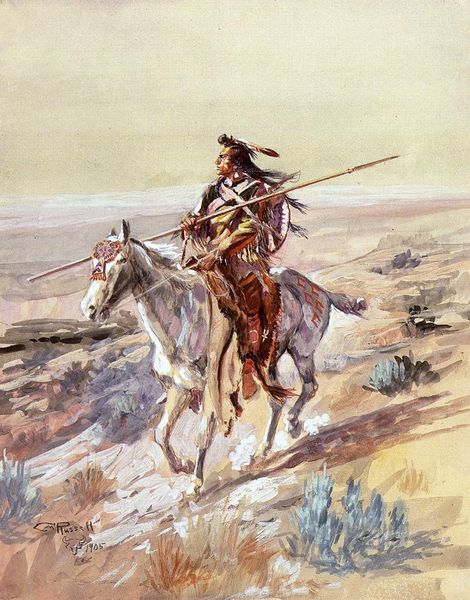
painting, gouache
#
portrait
#
painting
#
gouache
#
coloured pencil
#
watercolour illustration
#
watercolor
Copyright: Public domain
Editor: Here we have George Catlin’s “Kee-o-kuk (The Running Fox),” made around 1839. It's a watercolour painting. I’m immediately struck by how stately and composed it feels, despite being a dynamic equestrian portrait. What do you make of it? Curator: Oh, it sings to me of faded dreams and broken treaties. Catlin believed he was capturing a vanishing world. See how he meticulously renders Kee-o-kuk's regalia? Each feather, each bead tells a story. And the horse itself, that dark, almost brooding presence...do you feel the tension between the romantic portrayal and the harsh reality these figures faced? Editor: I do see that now, that almost...melancholy. I was initially drawn to the colours, the detail, but I missed that undercurrent. Was Catlin trying to create a truthful record, or something more idealistic? Curator: That’s the magic—or perhaps the tragedy—of art, isn’t it? He *thought* he was being truthful, documenting these individuals before their culture was, in his eyes, inevitably erased. But can any outsider truly capture another's soul? And wasn't his very presence a part of the force changing that world? It's a beautiful, flawed, complicated endeavor, painted with the best intentions. Editor: It really is a layered piece. Thanks for untangling some of that for me. I see so much more now! Curator: And thank you for asking the right questions, sparking new perspectives. That's what these conversations are all about!
Comments
No comments
Be the first to comment and join the conversation on the ultimate creative platform.
